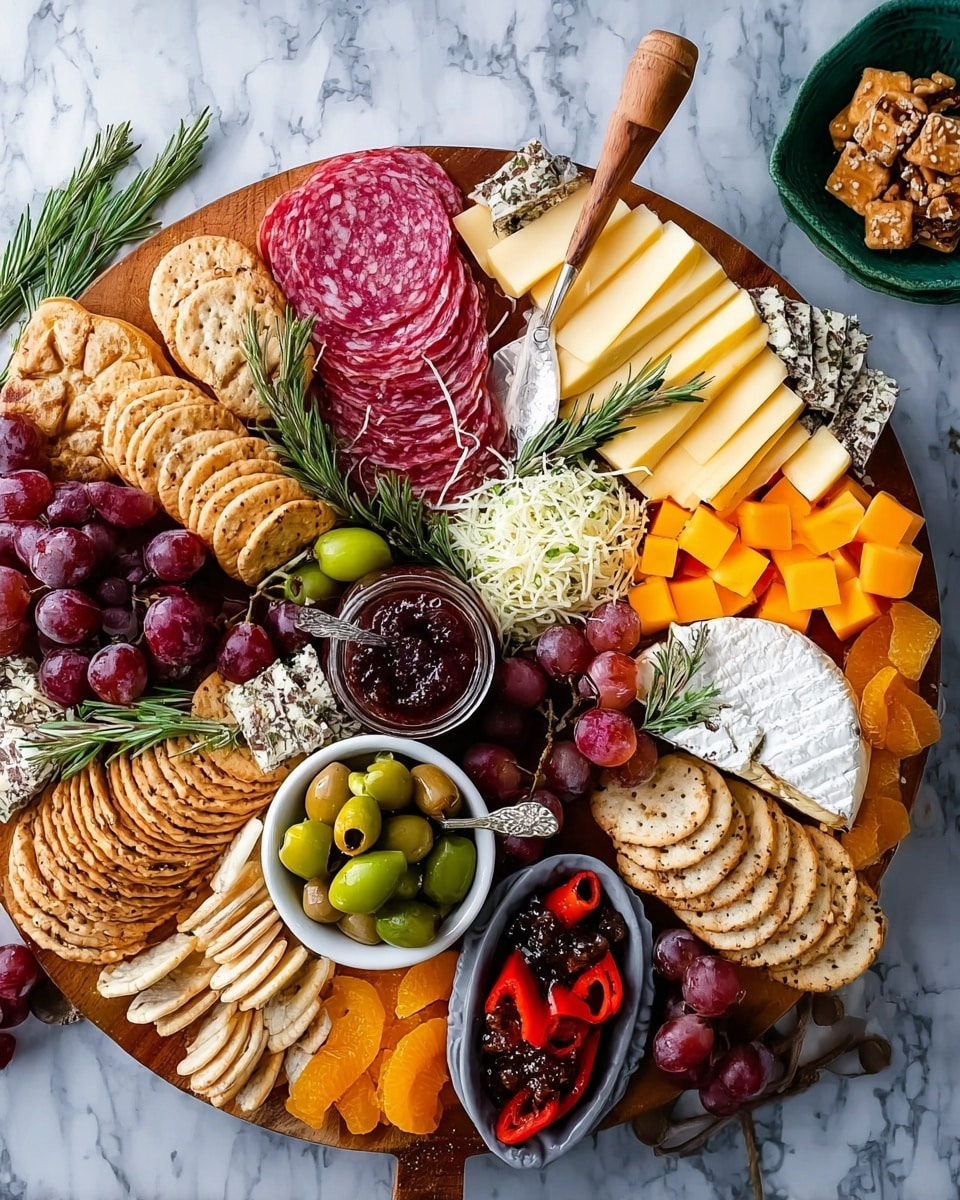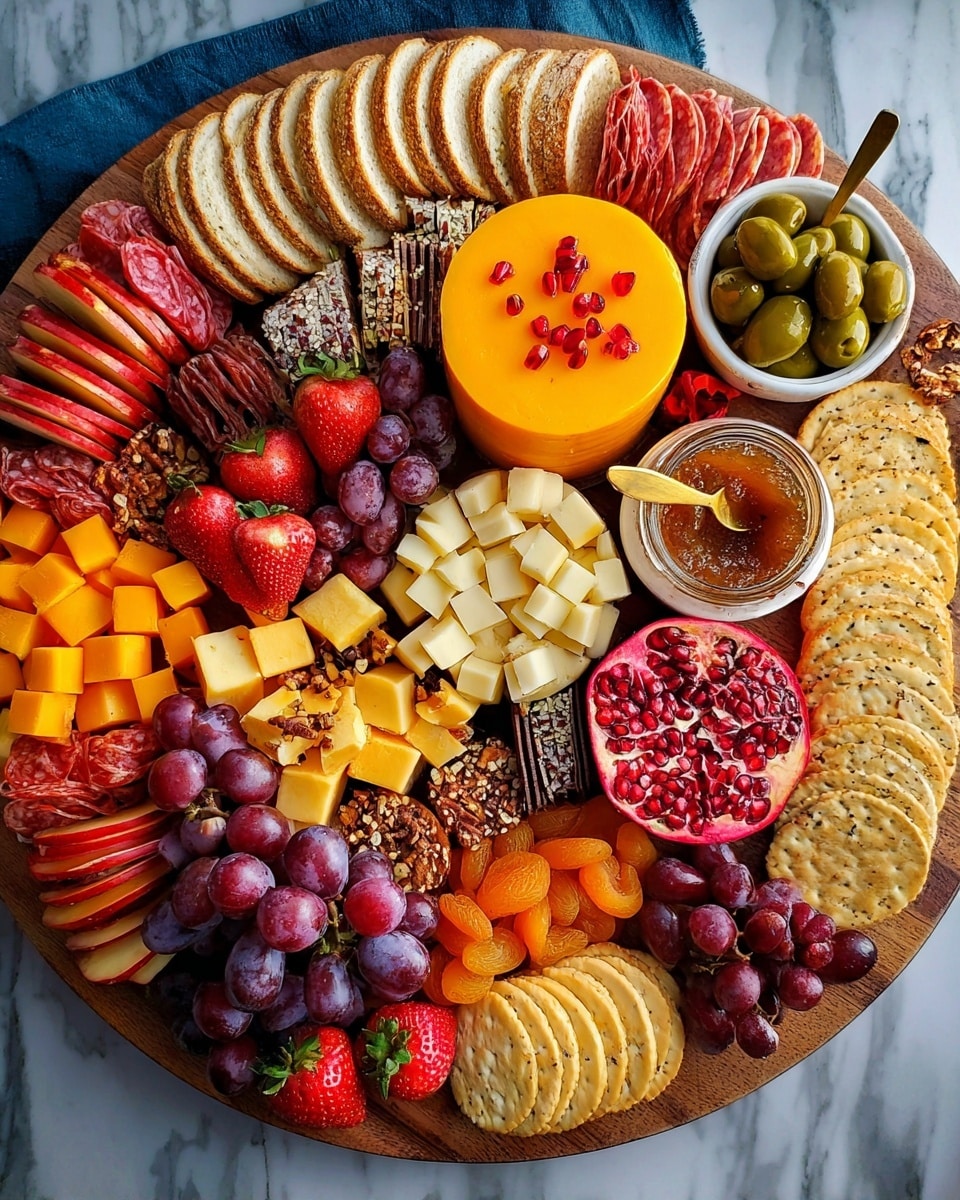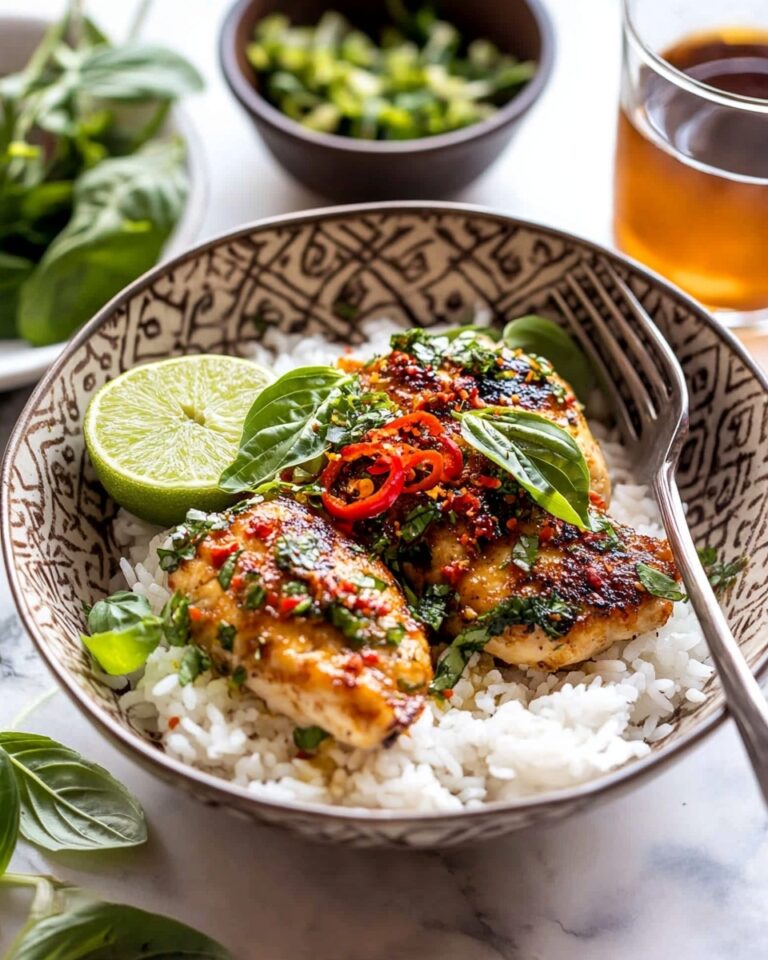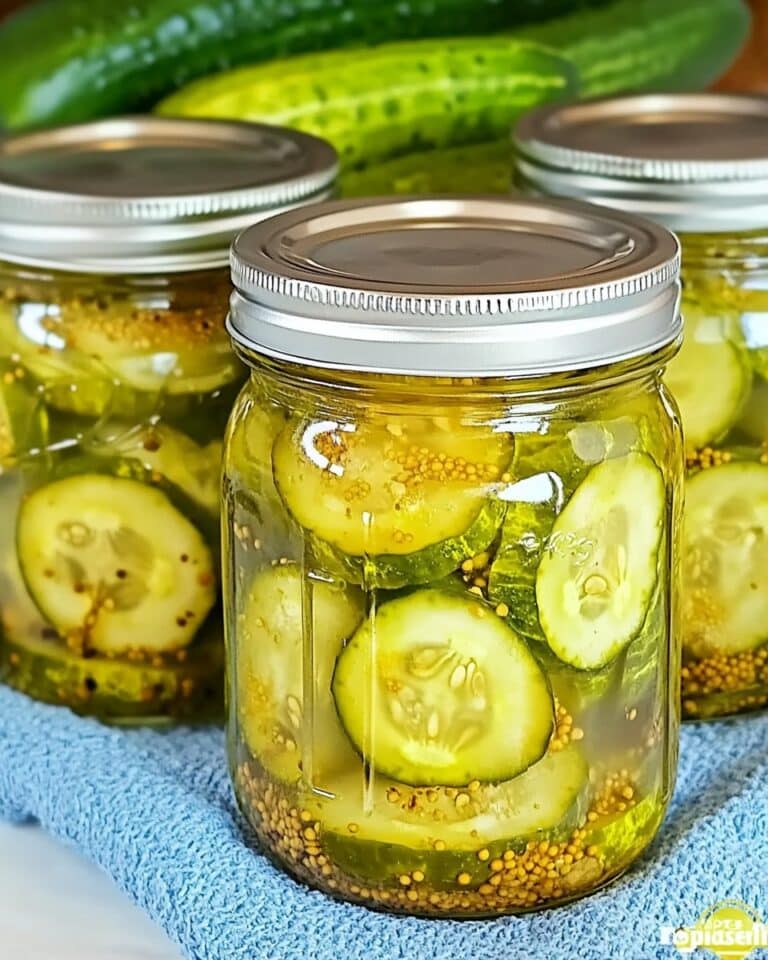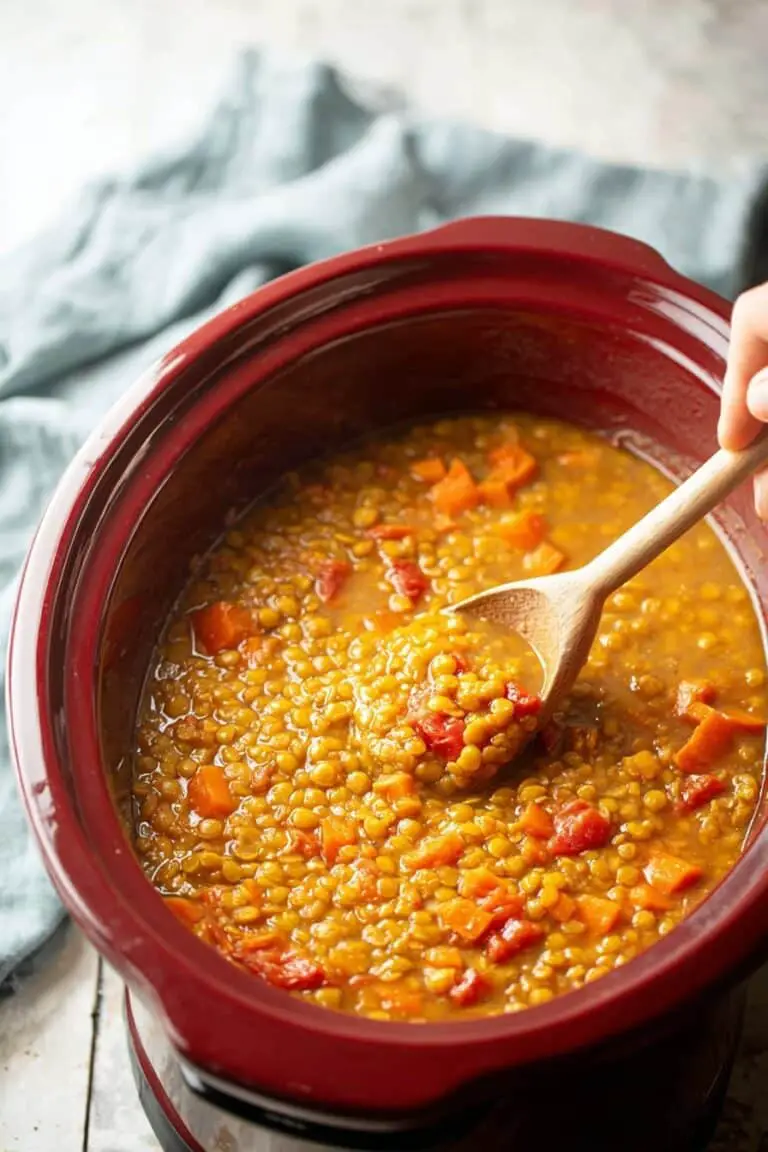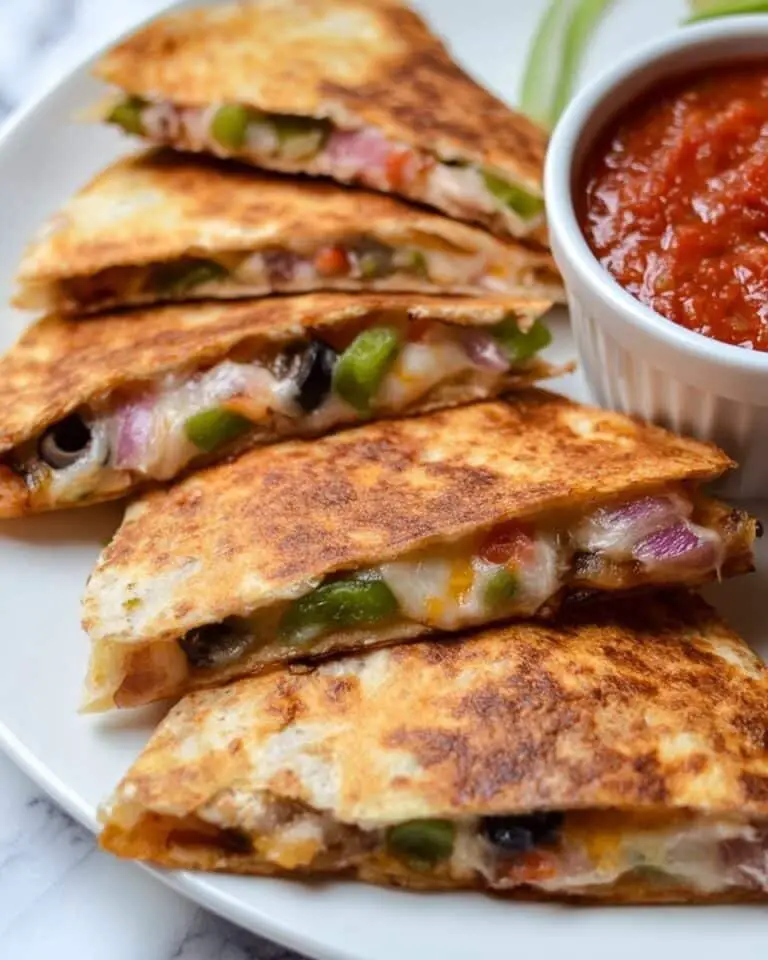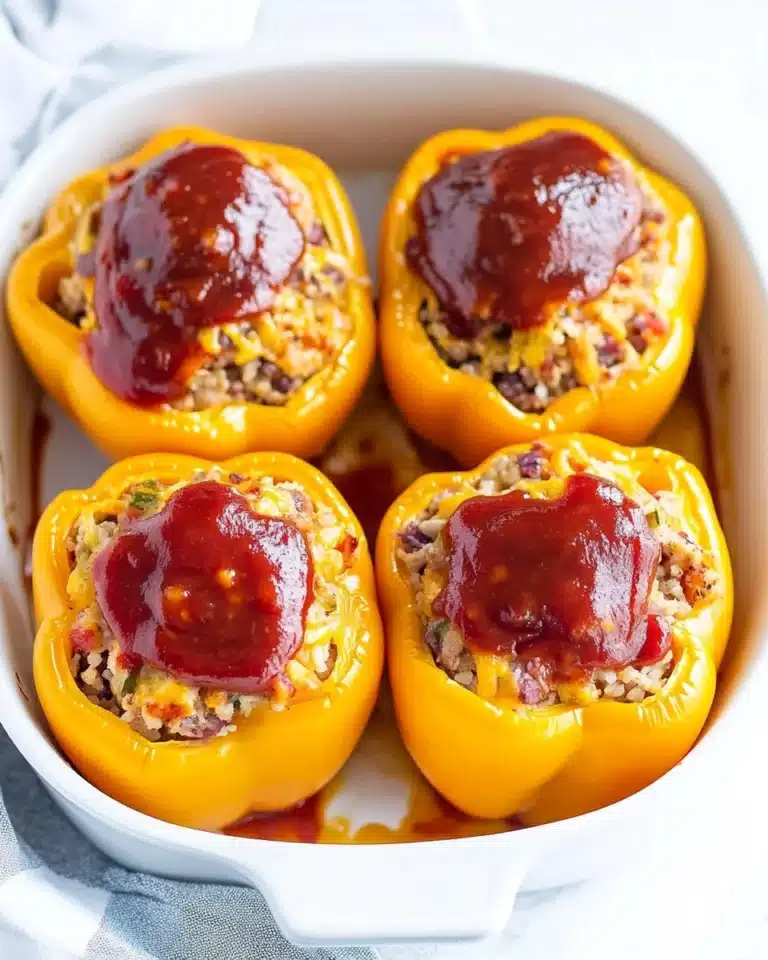If you’ve ever been a little intimidated by putting together a fancy spread, I’m here to tell you that this Charcuterie Board Recipe is going to change the game for you. Whether it’s for a casual get-together or a special celebration, this recipe combines delicious cheeses, meats, nuts, and fresh flavors to make something that looks incredible and tastes even better. Trust me, once you get the hang of the basics I’m about to share, you’ll want to build these boards for every occasion.
Why You’ll Love This Recipe
- Effortlessly Elegant: You don’t need to be a chef to create a stunning and tasty board that guests will rave about.
- Customizable for Any Occasion: From intimate nights to big parties, you can tailor the ingredients to suit your taste and crowd size.
- Balanced Flavors and Textures: This recipe shows you how to pair creamy cheeses, savory meats, crunchy nuts, and sweet fruits perfectly.
- Great for Entertaining: Skip the stress of cooking and get a visually gorgeous, crowd-pleasing platter ready in under 30 minutes.
Ingredients You’ll Need
Choosing good-quality ingredients is key here, but you don’t have to break the bank. I like to mix some classic staples with a few decadent touches—think creamy brie paired with crunchy candied pecans. Shopping tip: fresh seasonal fruits always add a beautiful pop of color and freshness!
- Hard cheeses: Think manchego, cheddar, swiss, gouda, gruyere, parmesan—firm and flavorful textures anchor your board.
- Soft cheeses: Brie, triple cream, goat cheese, havarti, burrata, or cream cheese topped with pepper jelly add that luscious, creamy element.
- Cured meats: Prosciutto, salami, ham, chorizo, capricola, soppressata—folded delicately for easy grabbing.
- Nuts: Almonds, candied pecans, pistachios, cashews, walnuts, macadamia nuts bring a satisfying crunch.
- Briny or pickled items: Olives, cocktail onions, cornichons, dill pickles, pepperoncini, olive tapenade, or bruschetta to add tang.
- Savory dips and spreads: Whole grain mustard, hummus, ranch, balsamic dip, romesco—great for pairing and variety.
- Fresh fruits and berries: Grapes, apples, pears, oranges, raspberries, blueberries, blackberries, strawberries—it’s all about freshness and color.
- Dried fruit: Apricots, cherries, figs, pineapple, mango add chewiness and sweet contrast.
- Sweet spreads: Fig butter, orange marmalade, blackberry jam or other jams are perfect companions to creamy cheeses.
- Chocolate: A few pieces of quality dark chocolate or chocolate-covered nuts for a little indulgence.
- Variety of crackers: Pita crackers, whole grain crackers, croccantini, or mini toasts give you that crunchy base.
- Toasted baguettes or mini toast crackers: Adds that perfect crisp texture to scoop up cheese and spreads.
Variations
One of the things I love most about my Charcuterie Board Recipe is how easy it is to customize. Whether you’re vegan, on a low-carb kick, or just love experimenting, you can shift components without losing any of the wow factor.
- Vegan variation: Swap out meats and cheeses for marinated tofu slices, roasted chickpeas, vegan cheeses, and plenty of fresh veggies and dips—I tried this for a friend once with rave reviews!
- Seasonal twists: Swap fresh fruit according to season—peaches and nectarines in summer, pomegranates and persimmons in winter really shine.
- Breakfast board: Incorporate bagels, smoked salmon, cream cheese, fresh herbs like dill, and fruit for a morning version.
How to Make Charcuterie Board Recipe
Step 1: Choose Your Board Wisely
I like to start by picking the right base. Depending on your guest count, you could use wooden cutting boards, slate trays, or even large ceramic platters. If you’re feeding a crowd, don’t hesitate to use two smaller boards instead of one big one—it makes it easier to refill partway through the event and keeps things looking fresh.
Step 2: Start with the Cheese
Cheese is the star here, and placing it first gives you an anchor to work around. I recommend odd numbers for variety—3, 5, or 7 cheeses depending on your number of guests. Distribute them evenly around your board and think about mixing textures and flavors: a sharp parmesan here, a mellow havarti there. Let the cheeses breathe a bit at room temperature before serving for the best flavor.
Step 3: Fold and Fan the Meats
I discovered a fun folding trick for cured meats that really makes the board pop. For thin slices like prosciutto, I gently fold them into loose ribbons so they look light and elegant. For thicker salamis or soppressata, folding like a deck of cards and fanning them out works perfectly. This not only looks inviting but makes grabbing slices super easy for everyone.
Step 4: Add Savory and Sweet Accents
Here’s where you get to play chef and color coordinator. Arrange briny items like olives and pickles near sharp meats, and place sweet jams or fresh fruit close to creamy cheeses like brie or goat cheese. I like to separate bright colors so they balance visually—red berries here, green olives there. This not only looks gorgeous but helps your guests easily find flavor combos they’ll enjoy.
Step 5: Fill In with Crackers and Nuts
Finally, fill any empty spaces with a good mix of crackers and nuts. A variety of textures here makes the board feel abundant and ensures everyone can find their favorite crunchy companion for cheese and spreads. I always add a few mini toasted baguette slices for an extra touch of sophistication.
Pro Tips for Making Charcuterie Board Recipe
- Bring Cheese to Room Temperature: I learned this the hard way—cold cheese hides flavor, so let it sit out 20-30 mins before serving.
- Use Odd Numbers for Visual Appeal: Grouping items in 3s or 5s creates a natural, inviting look that feels balanced.
- Mix Textures & Flavors: Combining creamy, crunchy, savory, and sweet keeps the board interesting for every palate.
- Don’t Overcrowd the Board: Leave some breathing room; it looks neater and makes grabbing easier for your guests.
How to Serve Charcuterie Board Recipe
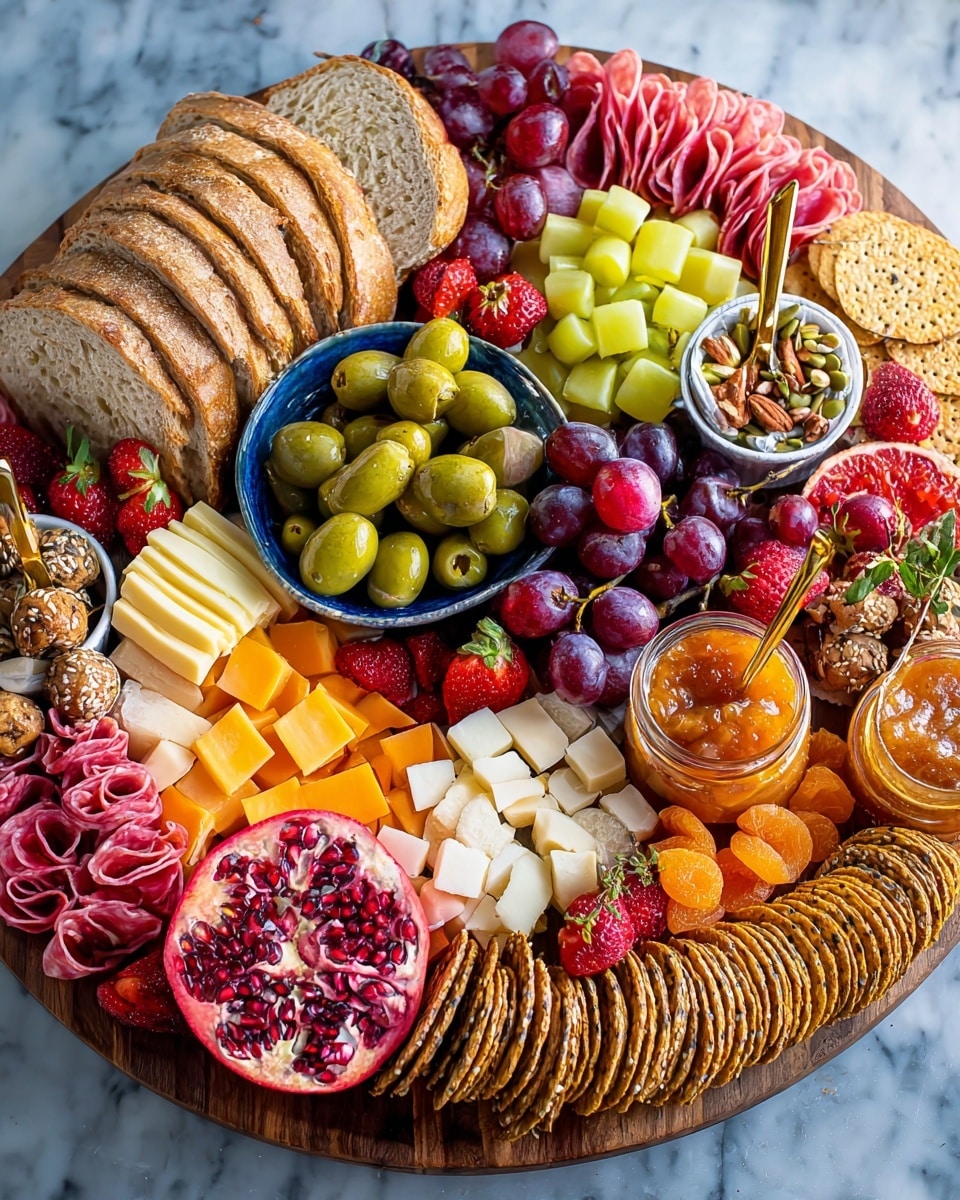
Garnishes
I like to tuck in fresh herbs like rosemary or thyme sprigs—they add a lovely aroma and a splash of green. Edible flowers can be a pretty touch for special occasions, and a drizzle of honey over soft cheeses like brie always makes my family swoon. Don’t be afraid to add a few colorful peppercorns or a sprinkle of flaky sea salt for texture.
Side Dishes
While this board is a complete snack or meal on its own, I like pairing it with light salads or a fresh baguette to round it out. A crisp green salad with vinaigrette provides a refreshing contrast. If you’re serving wine, simple roasted nuts or marinated artichokes work beautifully alongside.
Creative Ways to Present
I once laid out a “theme” board for a summer garden party—I used a rustic wooden plank for a farmhouse feel and coordinated colors to mimic the garden’s blooms. Another time, for a birthday, I created mini boards for each guest’s seat—super fun and personalized. Using small bowls and ramekins to separate wet items like olives or dips keeps things neat and adds dimension.
Make Ahead and Storage
Storing Leftovers
I’ve found that any leftovers keep best tightly wrapped in the fridge. For cheeses, I wrap them in wax paper or cheese paper rather than plastic to help them breathe and last longer. Meats should be stored separately in airtight containers to maintain freshness.
Freezing
Freezing a charcuterie board isn’t really ideal because of the fresh fruits and textures, but you can freeze some cured meats or hard cheeses if you have extras. Just thaw them slowly in the fridge and use soon after.
Reheating
Most elements on a board are served cold or at room temperature, so reheating isn’t usually necessary. For any dips or spreads that you warmed, low heat in the microwave or oven keeps them tasty without drying out.
FAQs
-
What is the best cheese for a Charcuterie Board Recipe?
A great charcuterie board balances a variety of flavors and textures, so I recommend including hard cheeses like manchego or parmesan and soft cheeses like brie or goat cheese. This ensures every cheese lover finds something they enjoy.
-
How do I fold cured meats for a charcuterie board?
For thin slices like prosciutto, fold them into loose ribbons to create a light, airy look. Thicker slices such as salami work well folded like a deck of cards and fanned out. This both looks inviting and makes grabbing pieces easy.
-
Can I prepare a charcuterie board ahead of time?
You can prep most components ahead—slice cheeses, prep fruits, and fold meats—but I like to assemble the board about an hour before serving to keep everything fresh and visually stunning.
-
What are good pairings for sweet and savory on the board?
Pair sweet spreads or fresh fruit with creamy cheeses like brie or goat cheese, while tangy mustard, nuts, and pickles complement sharper cheeses and cured meats. This mix creates a harmonious balance of flavors.
-
What is the best way to store leftovers?
Store cheeses wrapped in wax or cheese paper to keep them fresh longer, and refrigerate meats in airtight containers. Fresh fruits are best eaten within a day or two, so try to consume leftovers promptly.
Final Thoughts
I absolutely love how this Charcuterie Board Recipe brings people together without the fuss of cooking a big meal. I still remember putting together my very first board and watching everyone gravitate toward it—it was such a satisfying and fun way to entertain. I hope you try this yourself, tweak it to your tastes, and enjoy the simple pleasure of sharing good food with good company. Once you get comfortable, you’ll see there’s almost no limit to the creativity and joy this kind of spread can bring!
Print
Charcuterie Board Recipe
- Prep Time: 20 min
- Cook Time: 0 min
- Total Time: 20 min
- Yield: 8 servings
- Category: Appetizer
- Method: No-Cook
- Cuisine: American
Description
Create a stunning and delicious Charcuterie Board perfect for any gathering, featuring a variety of cheeses, cured meats, nuts, fruits, and accompaniments to satisfy diverse tastes.
Ingredients
Cheeses
- 3-7 types of hard cheeses: manchego, cheddar, swiss, gouda, gruyere, parmesan
- Soft cheeses: brie, triple cream, goat cheese, havarti, burrata, cream cheese with pepper jelly, blue cheese or gorgonzola (optional)
Cured Meats
- Prosciutto
- Salami
- Ham
- Chorizo
- Capricola
- Soppressata
Nuts
- Almonds
- Candied pecans
- Pistachio nuts
- Cashews
- Walnuts
- Macadamia nuts
Briny, Pickled, or Marinated
- Olives
- Cocktail onions
- Cornichons
- Dill pickles
- Pepperoncini peppers
- Olive tapenade
- Bruschetta
Savory Dips and Spreads
- Whole ground mustard
- Hummus
- Ranch dressing
- Balsamic dip
- Romesco sauce
Vegetables (optional)
- Cold cut veggies (as desired)
Fresh Fruit and Berries
- Grapes
- Apples
- Pears
- Oranges
- Raspberries
- Blueberries
- Blackberries
- Strawberries
Dried Fruit
- Apricots
- Cherries
- Figs
- Pineapple
- Mango
Sweet Spreads
- Fig butter
- Orange marmalade
- Blackberry jam
Chocolate
- Quality dark chocolate pieces
- Chocolate covered nuts
Crackers and Bread
- Pita crackers
- Whole grain crackers
- Croccantini
- Toasted baguette slices or mini toast crackers
Instructions
- Choose Your Board: Select an appropriately sized board for your party. For larger gatherings, consider using multiple boards. Refer to tips for board ideas and sizing.
- Lay out the Cheese: Start by placing 3, 5, or 7 types of cheese evenly spaced around the board to anchor it. Use an odd number of cheeses for visual appeal.
- Arrange the Meats: Fold cured meats like salami and soppressata in half and fan them out like a deck of cards or fold twice for easy grabbing. For thin meats such as prosciutto, create light, airy ribbons before placing them down.
- Add Savory and Sweet Accompaniments: Distribute savory items such as mustards, olives, and nuts near the cured meats and sharper cheeses like parmesan. Place sweet accents, including fresh fruit, jams, and candied nuts, close to softer cheeses like brie or goat cheese. Cheddar pairs well with a mix of both sweet and savory.
- Fill in the Gaps: Add crackers and toasted breads to fill larger empty spaces on the board. Use leftover nuts, fruits, or small garnishes to fill smaller gaps and enhance visual variety.
Notes
- Building a beautiful Charcuterie Board is easier than you think and can be customized for any season, group size, or occasion.
- Use odd numbers when selecting types of cheese for a more visually appealing layout.
- Pair flavors mindfully: salty with sweet, creamy with crunchy, and sharp with mild for the best tasting experience.
- Adjust quantities and varietals based on guest dietary preferences and size of the gathering.
Nutrition
- Serving Size: 1 serving
- Calories: 240 kcal
- Sugar: 7 g
- Sodium: 607 mg
- Fat: 16 g
- Saturated Fat: 8 g
- Unsaturated Fat: 7 g
- Trans Fat: 1 g
- Carbohydrates: 15 g
- Fiber: 1 g
- Protein: 10 g
- Cholesterol: 45 mg

